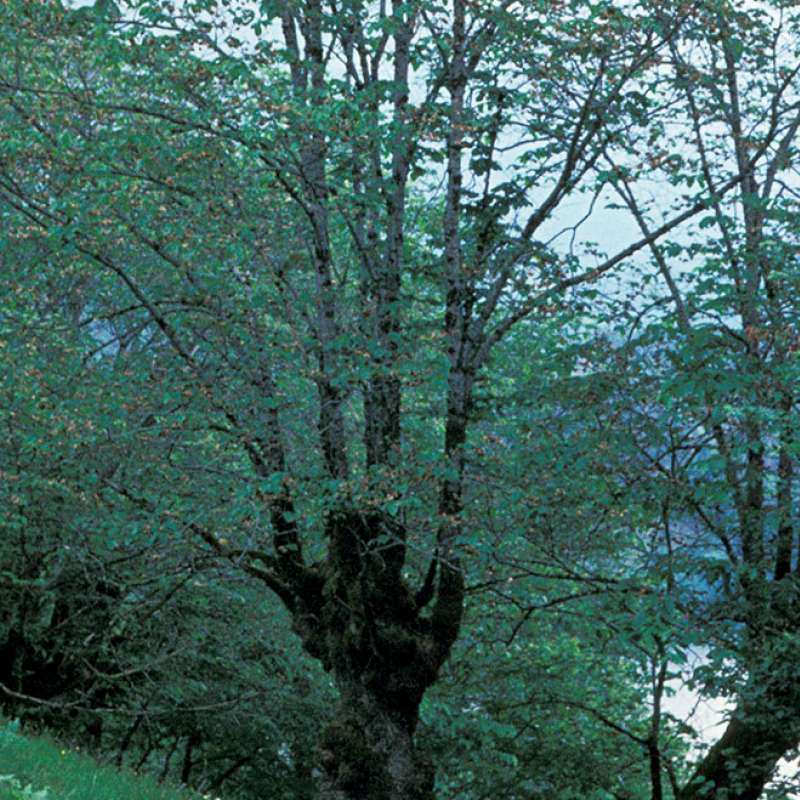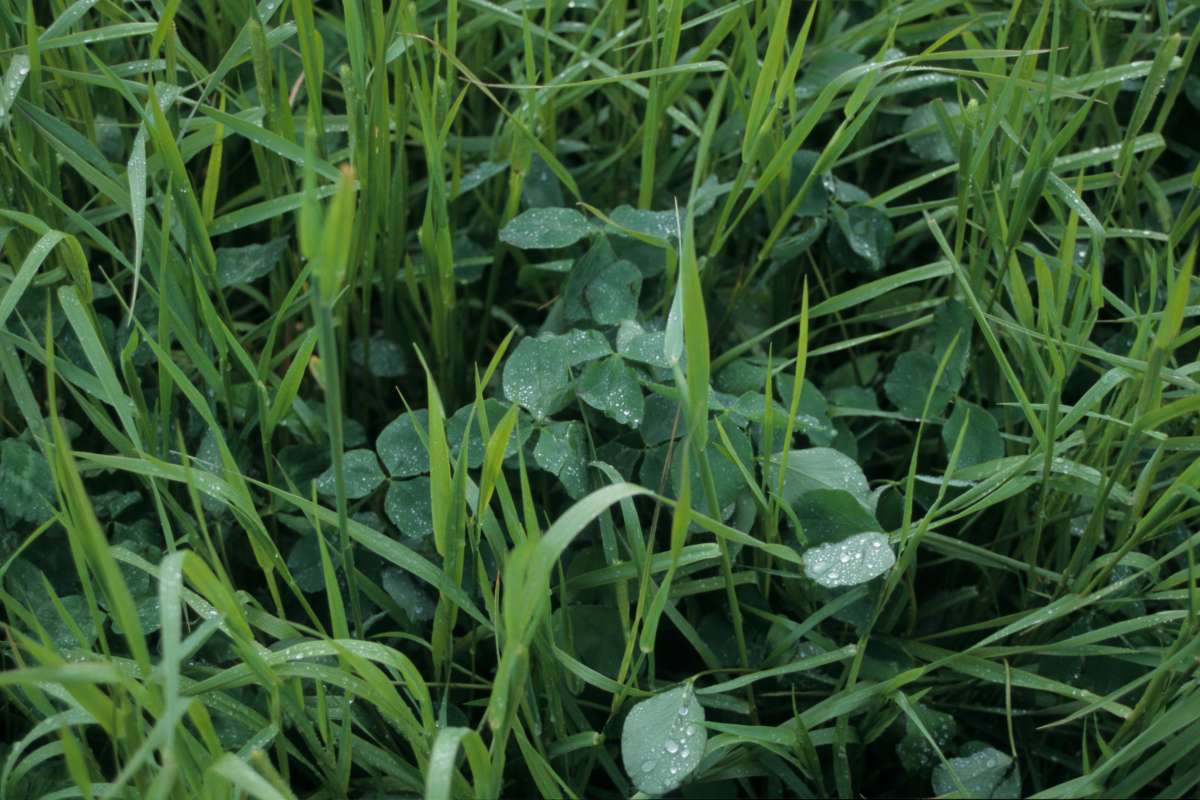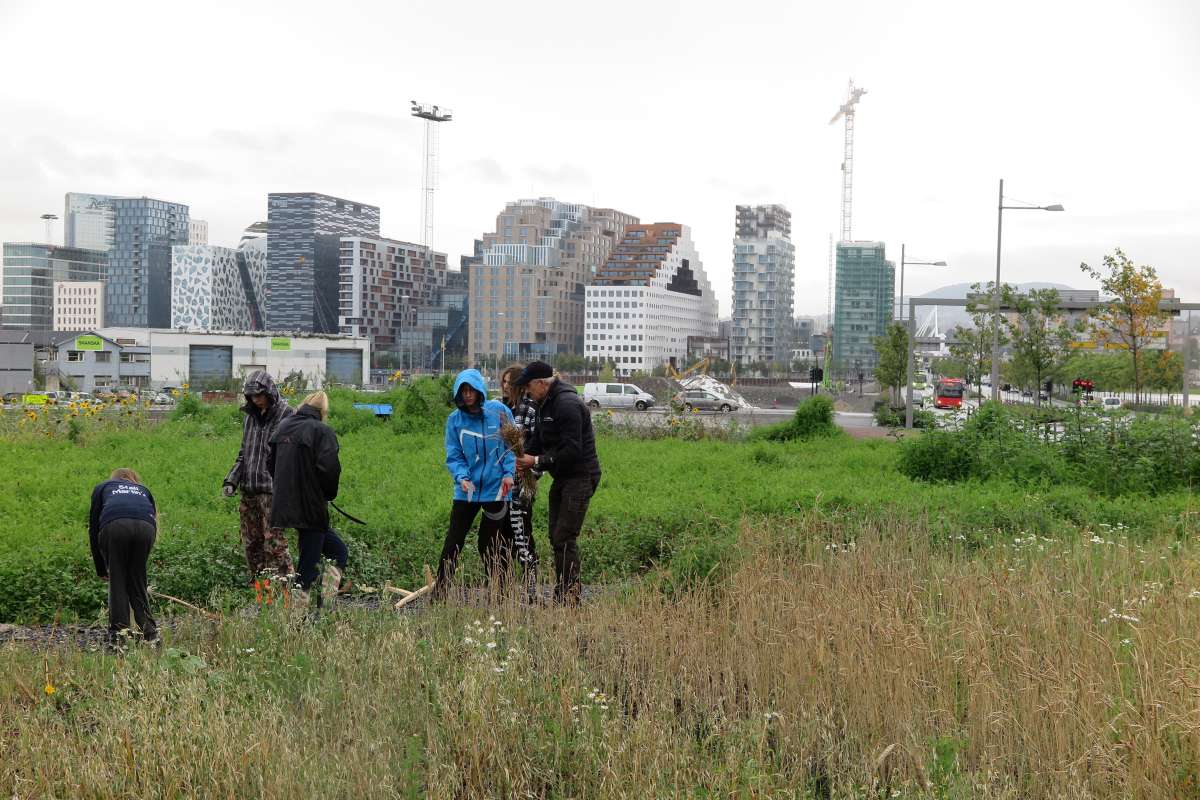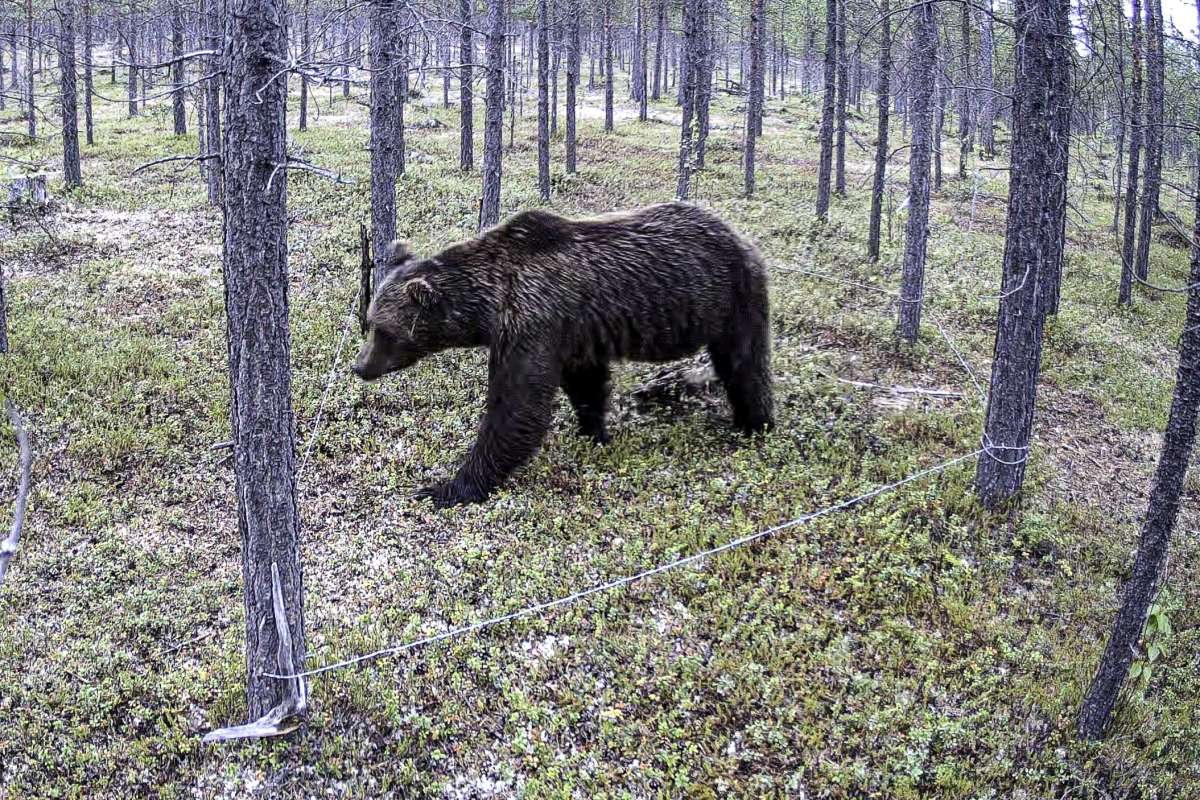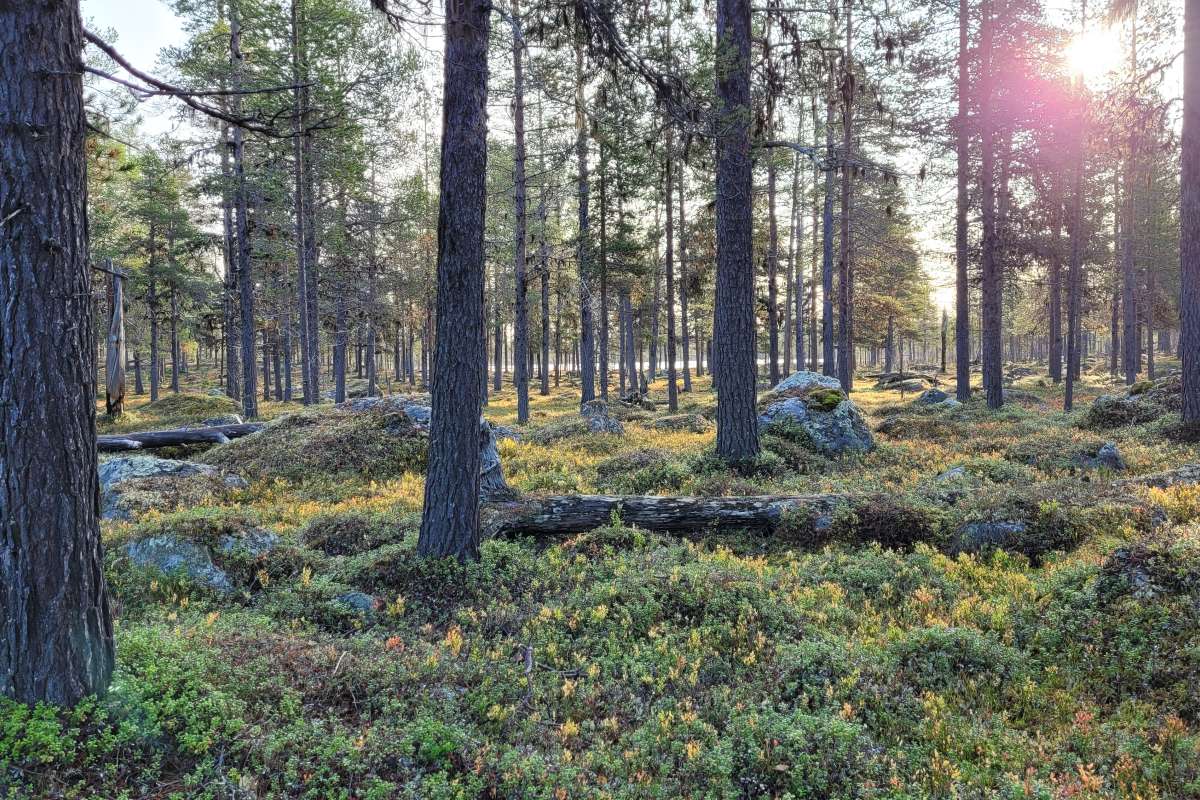Investigating the practise of pollarding in Western Norway
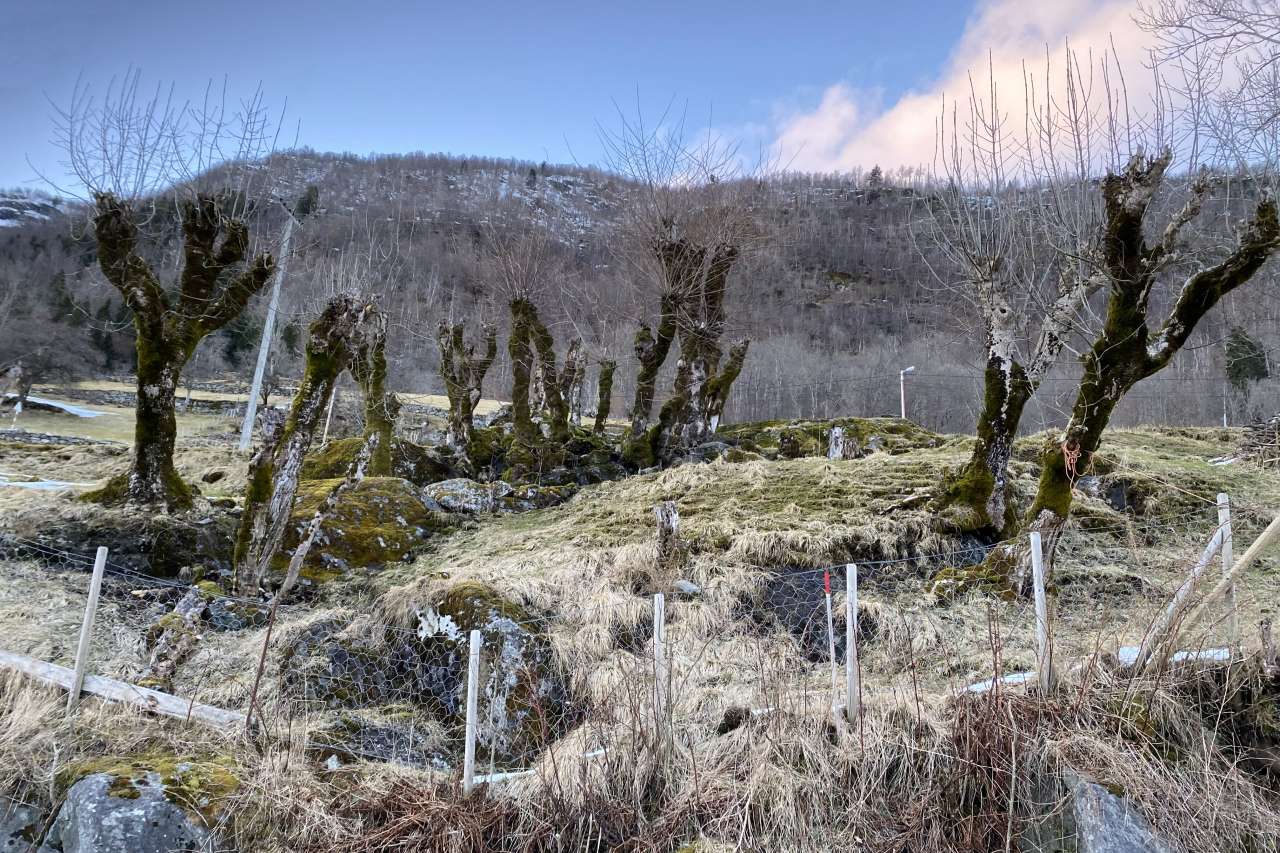
Pollarding means cutting the top and branches off standing deciduous trees, or felling a tree. Depicted are pollarded ash trees in Sogndal in Western Norway. Photo: Jørund Johansen
In the lush landscapes of Western Norway, pollarded trees bridge the past with modern environmental concerns. In a recent study, researchers investigated what motivates farmers to continue this ancient tree pruning practice.
Pollarding, a traditional practice of pruning trees to encourage new growth, mainly for fodder, has found a new lease of life, particularly in Western Norway. This is among other things due to policy grants aimed at preserving cultural landscapes and enhancing biodiversity.
In a recent study, researchers delved into modern pollarding practices and their ecosystem services in Vestland county. The study combined in-depth interviews with quantitative surveys targeting pollarding farmers across the region.
“Traditionally, pollarding provided additional fodder from the tree layer and made it possible to utilise resources from areas unsuitable for grazing and grass harvesting. The leaves were used as fodder, and the branches were used for tools, poles, and firewood. Today, the economic returns of pollarding are too low to be worthwhile for farmers,” says Anna Birgitte Milford, social economist and researcher at NIBIO.
The researchers have been interested in investigating exactly what it is that motivates the farmers to carry on. Do they pollard mainly due to the grants they receive in doing so, or are there other aspects of pollarding they highlight as most important?
In the study modern pollarding practices were explored, including procedures and the ecosystem services pollarded trees offer in terms of bioresources, cultural benefits, and biodiversity conservation. Challenges with pollarding were also addressed.
Part of our cultural heritage
Through the interviews and survey, the researchers discovered that some farmers are motivated to pollard because of the erosion control and sheltering functions it provides to animals. For most of the farmers, however, the ecosystem services obtained from pollarding are first and foremost related to cultural and aesthetic values.
“Many of the farmers we interviewed described how they appreciate a landscape with pollarded trees because of the cultural heritage it represents, and highlighted this as their main motivation to continue the practice,” says NIBIO-researcher Jørund Johansen who conducted most of the interviews.
As far as policies regarding pollarding is concerned, the researchers found that the farmers’ motivation for pollarding extended beyond mere economic incentives.
“The farmers who took part in the study see few disadvantages with pollarding. While the public grant serves as a welcome incentive, most of the farmers expressed a genuine commitment to continue pollarding irrespective of financial support,” Johansen says.
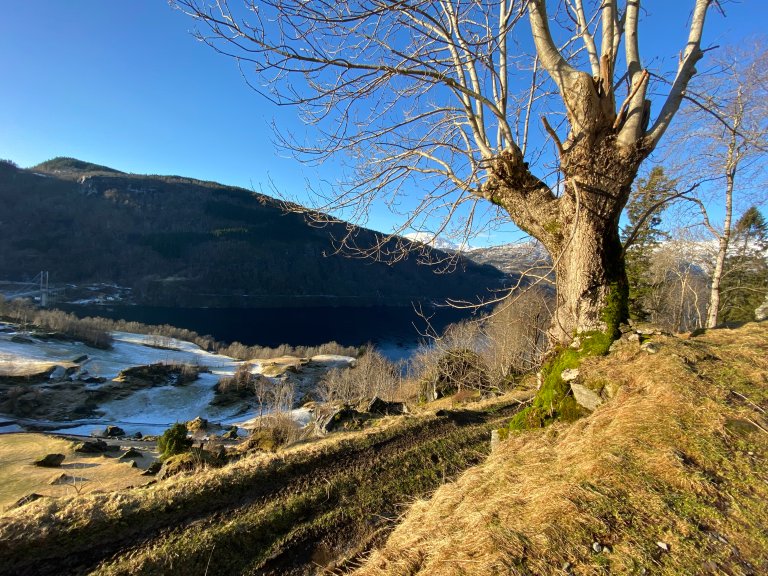
Pollarding enhances biodiversity
Old trees are extremely important for biodiversity. A pollarded tree has an increased likelihood of becoming old due to its aesthetic value and the tree’s physiology.
"Pollarded trees have a relatively small crown on a low and thick trunk, which makes the tree more robust against weather and wind. Additionally, pollarded trees often become hollow in the middle at a younger age than trees that are not managed. Hollow deciduous trees are a particularly valuable habitat for a variety of species," says NIBIO researcher and ecologist Fride Høistad Schei.
“Solitary trees dotting agricultural landscapes serve as havens for lichens, mosses, fungi, and insects, fostering a rich tapestry of biodiversity. This was highlighted by several pollarding farmers as a significant motivating factor.”
The study also revealed that several farmers who practise pollarding let the branches and twigs from the trees decay in heaps outside in the field. This increases the structural complexity of the landscape and provides nesting opportunities for animals.
“It is interesting to note that farmers do this against the advice of the County Governor who provides the pollarding grant, who rather recommends the pollarded area to be kept “nice and tidy”,” says Schei.
“This shows that in the formation of the pollarding policy the aims of achieving both ecological and the aesthetic values are up against each other, something which is typical in the management of cultural landscapes.”
She adds that this is one of the topics the researchers brought forth in discussions with representatives from the County Governor of Vestland, with a recommendation that changes be made to future guidelines.

Grant scheme should continue
Anna Birgitte Milford says that gaining insight into the aspects of modern pollarding practises can be useful when anticipating the future of pollarding, and to identify opportunities for enhancing the outcomes.
“Our results indicate that sharing information about the cultural heritage of pollarding and the benefits it may have on biodiversity, to farmers as well as to the general public, can be an important part of a strategy to uphold pollarding. Furthermore, it seems likely that without the economic incentives from the public grant, pollarding would to some extent continue, but perhaps more sporadically, and with less establishment of new pollarded trees,” she says.
The researchers believe that pollarding among farmers in Western Norway most likely requires the continuation of a grant scheme.
“To provide additional benefits to biodiversity, it could also be considered to revise the advice against piling branches in heaps instead of burning,” Schei concludes.
Contacts

The International Day for Biological Diversity
The International Day for Biological Diversity is a UN observance celebrated every year on May 22nd. The purpose is to increase knowledge and awareness of issues related to biological diversity.
The number of species living on the planet is decreasing at a rapid rate, despite broad agreement on the importance of preserving biodiversity.
The UN estimates that three-quarters of the world's land has been altered by human activities. As a result, one million species face extinction in this century, and the trends are still worsening.
ROTATE
Application of traditional knowledge to halt biodiversity loss in woodlands (ROTATE) is a major interdisciplinary collaborative project between Czech and Norwegian researchers.
The aim of the project is to support the biodiversity of organisms associated with traditional forms of forest management, many of which are now abandoned or rapidly declining. Through interdisciplinary collaboration in research and practical implementation, the project seeks to revive traditional forest practices to conserve and strengthen this biodiversity.
Project partners are NIBIO, the Czech University of Life Sciences Praque, Biology Centre (CAS) and IBOT. Norwegian PI is Dr Fride Høistad Schei at NIBIO.
ANIMATED FILMS ABOUT TRADITIONAL MANAGEMENT OF DECIDUOUS TREES AND FORESTS
As part of the project ROTATE's outreach, three animated videos have been produced. The first one is about pollarding, while the other two are about litter raking and coppicing. Watch the videos on NIBIO's YouTube channel or find them on this page.
NIBIO on YouTube.
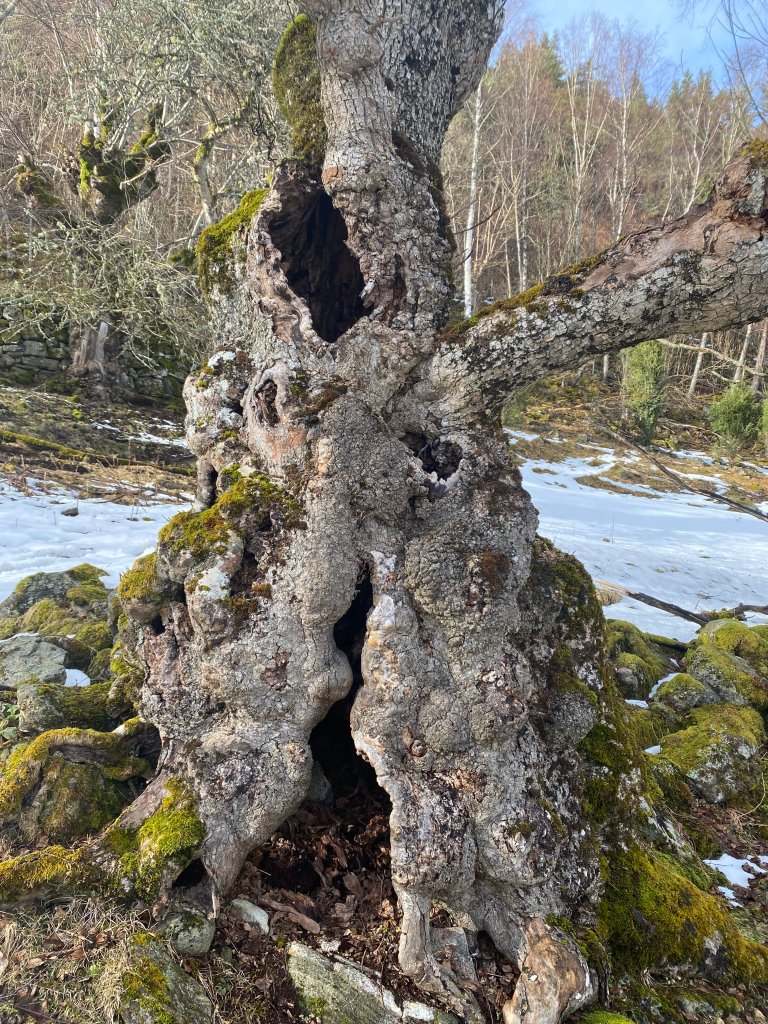
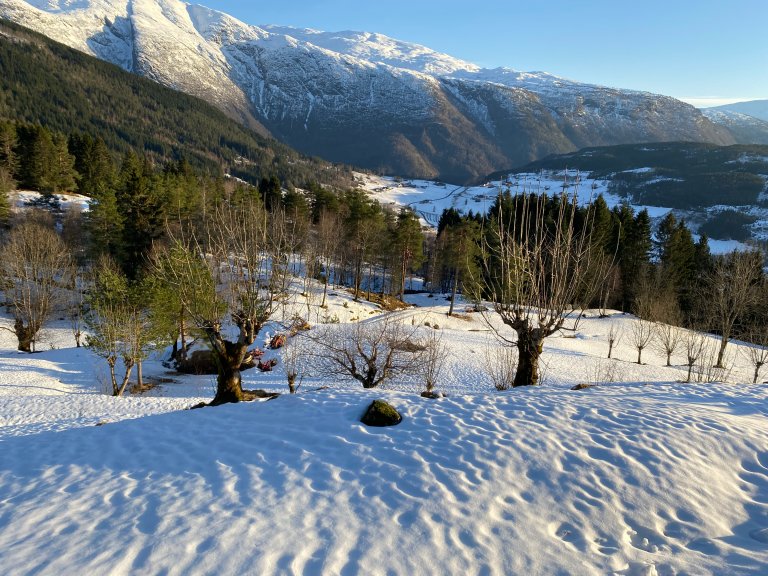
Contacts

Publications
Abstract
No abstract has been registered

